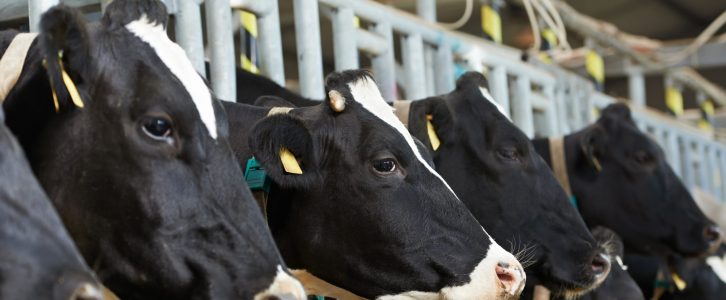Introduction
Earlier investigations have demonstrated the linear increase in milk proportions of total n-3 fatty acids and α-linolenic acid (ALA) in dairy cows when incremental amounts of GFX were incorporated into their diets (Resende et al., 2015). It is worth noting that oilseeds like GFX contain polyunsaturated fatty acids (PUFA) that exhibit toxicity towards ruminal methanogens and protozoa (Patra, 2013). Consequently, this toxicity has the potential to reduce enteric methane production in lactating dairy cows.
Previous studies by Martin et al. (2016) have observed linear reductions in CH4 production, CH4 yield, and CH4 intensity in dairy cows fed diets supplemented with increasing levels of extruded flaxseed. However, there is a dearth of research specifically investigating the effects of GFX on ruminal microbiota diversity, taxa, and enteric CH4 emissions in lactating dairy cows fed high-forage diets. Additionally, Schroeder et al. (2014) demonstrated varying “in situ” dry matter (DM) degradability rates for different forms of flaxseed, with GFX exhibiting a distinct degradability pattern. These findings imply that the processing method and form of flaxseed fed may have different impacts on ruminal fermentation processes, including methanogenesis, thus warranting further investigation with GFX.
Therefore, the objective of the current study was to evaluate the influence of incremental amounts of GFX on ruminal microbiota diversity and taxa, enteric CH4 emissions, and related parameters in lactating dairy cows fed high-forage diets. By delving into these aspects, the researchers in charge of the study aimed to contribute to the understanding of the potential benefits and mechanisms associated with GFX supplementation.The outcomes of their investigation may have significant implications for the improvement of dairy cow nutrition and the promotion of environmental sustainability.
The study
Researchers investigated the impact of increasing levels of ground flaxseed (GFX) on the diversity and relative abundance of ruminal microbiota taxa, enteric methane (CH4) emissions, and urinary excretion of purine derivatives (PD) in lactating dairy cows. The study aimed to explore the potential benefits and effects of GFX supplementation in the cows’ diet.
Materials & Methods
- The study followed a replicated 4 × 4 Latin square design, involving twenty mid-lactation Jersey cows.
- Twelve cows were used for ruminal sampling, sixteen for enteric CH4 measurements, and all twenty cows for spot urine collection.
- Each experimental period lasted 21 days, with 14 days allocated for diet adaptation and 7 days for data and sample collection.
- Four diets were formulated, gradually replacing corn meal and soybean meal with 0%, 5%, 10%, and 15% GFX in the dry matter of the diets.
- Ruminal fluid samples obtained through stomach tubing were used for DNA extraction, while enteric CH4 production was measured using the sulfur hexafluoride tracer technique.
Results
- Similarly, the relative abundance of ruminal archaea genera remained unaffected by the GFX-supplemented diets.
- However, the relative abundance of the Firmicutes phylum decreased linearly (P < 0.01) with increasing GFX levels, while the relative abundance of the Bacteroidetes phylum increased linearly (P < 0.01).
- Among ruminal bacteria, the relative abundance of Ruminococcus and Clostridium decreased linearly (P < 0.01), whereas the relative abundance of Prevotella and Pseudobutyrivibrio increased linearly (P < 0.01) in response to GFX supplementation.
Moreover, a noticeable trend towards a linear reduction (P = 0.055) in enteric CH4 production was observed as the cows consumed higher amounts of GFX. However, there were no significant effects on CH4 yield, CH4 intensity, or the urinary excretion of uric acid, allantoin, and total PD.
Overall, the study suggested that GFX supplementation linearly decreased the relative abundance of Ruminococcus and Clostridium in the rumen, as well as enteric CH4 production. Importantly, there were no indications of negative impacts on CH4 yield, CH4 intensity, or microbial protein synthesis in the rumen, as reflected by the unchanged urinary excretion of total PD.
Conclusions
- This study demonstrates that incorporating GFX into the diet of lactating dairy cows can lead to alterations in ruminal microbiota composition and a linear reduction in enteric CH4 production.
- The decrease in the relative abundance of certain bacterial genera suggests potential shifts in rumen fermentation patterns.
- However, the absence of negative effects on CH4 yield, CH4 intensity, and urinary excretion of purine derivatives indicates that GFX may not compromise microbial protein synthesis.
- Further research is warranted to explore the long-term implications and additional benefits of GFX supplementation in dairy cow nutrition.
Source: Abstract taken from “Kleves V Almeida , Feeding incremental amounts of ground flaxseed: effects on diversity and relative abundance of ruminal microbiota and enteric methane emissions in lactating dairy cows, Translational Animal Science, Volume 7, Issue 1, January 2023.”
